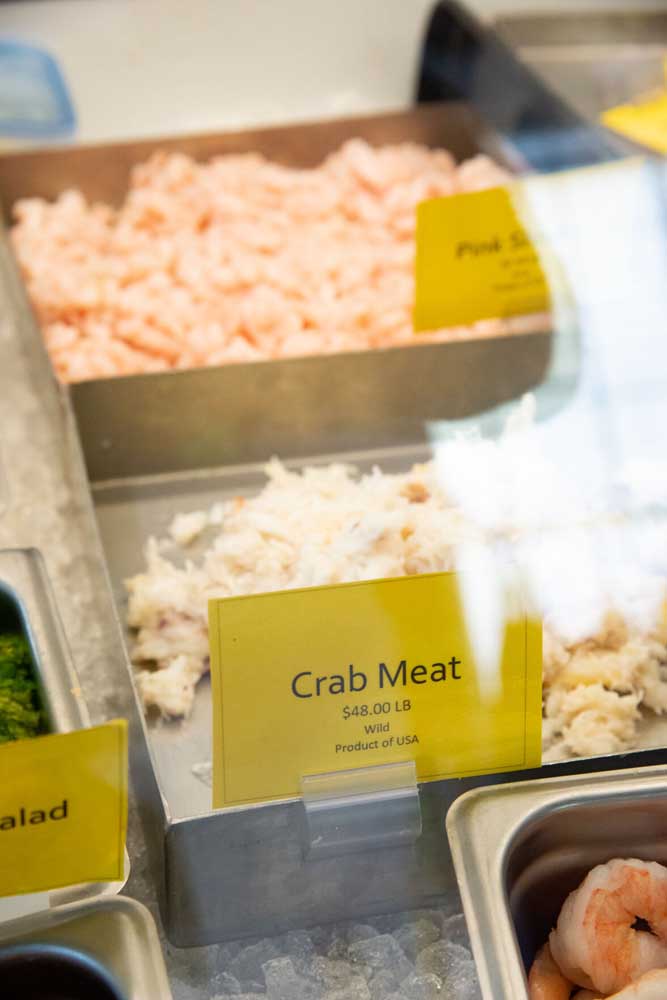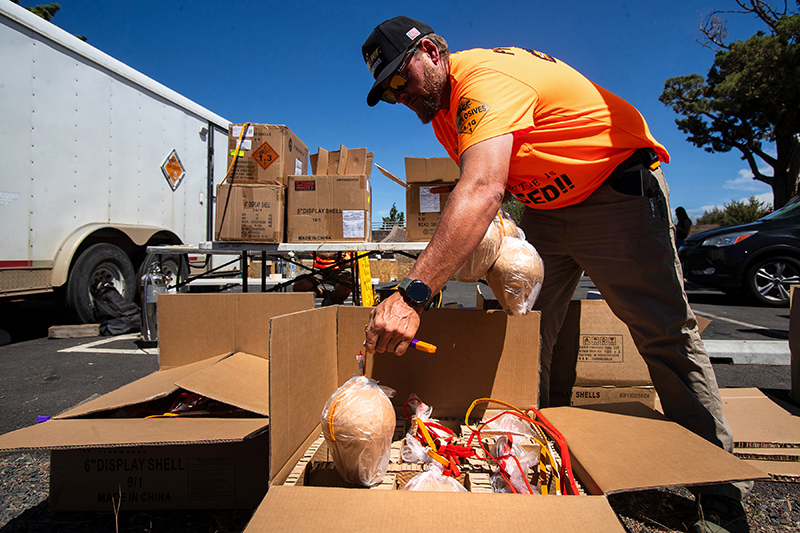Where’s the crab?
Published 5:00 am Wednesday, August 4, 2021

- With rising prices, FishStix Seafood Market is selling crab meat at $48 per pound.
It’s one of the most popular seafood items on the North Coast and a valuable local fishery, but Dungeness crab has never been harder to find, or more expensive.
At restaurants, portions may be smaller, prices are steep and crab may be off the menu completely this summer.
Seafood distributors, sellers and processors point to a number of factors that converged to create a perfect storm: the coronavirus pandemic, labor shortages, product shortages, supply chain issues and market demands. All have contributed to drive prices up from the usual $25 or so per pound to as much as $52.
“There’s a lot of theories and a lot of possibilities and a lot of reasons for things and it’s kind of, ‘Take your pick,’” said Tim Novotny, a spokesman for the Oregon Dungeness Crab Commission.
Oregon’s commercial Dungeness crab season traditionally opens in December and doesn’t end until Aug. 14. Most of the crab are landed within the first eight weeks of the season opener.
This season was difficult for many in the industry. It opened late and yielded a mere 12 million pounds to date — compared to last year’s 20 million. On average, commercial crabbers land around 16 million pounds in Oregon, though the fishery can be cyclical, with boom and bust periods.
Demand in the live crab market played a role in driving up prices this year. Fishermen were getting — and could command — high value. Demand came, as usual, from China, but also from California, where low catch numbers and a shortened season pushed nontraditional live markets.
Then there was the pandemic’s impact on restaurants. Shut down on and off for much of last year or curtailed by various regulations, restaurants began to open more this spring and summer. Seafood orders that had slowed last year suddenly ramped up, said Jim Matlock, general manager for Ocean Beauty, a seafood distributor in Astoria.
Not all processors were well-stocked on crab when demand from this sector arrived. A labor shortage has meant that even if new product arrives or is available in freezers, there may not be enough employees to quickly and consistently prepare it for sale.
Jeff Grannum, the sales director for the Washington-state based processor South Bend Products, has been in the fish business for most of his life, accustomed to its ebbs and flows, the peaks and valleys of employment. But he has never seen such a struggle to bring in workers.
“I’d say this is definitely uncharted territory,” he said.
One South Bend Products employee, who had been picking crab meat for the company for a long time, decided to take a job doing housekeeping at a hotel. The hotel, also desperate for employees, was offering her $25 an hour.
Difficult calls
Consumers seem to have taken the price increases for Dungeness crab in stride — much to the surprise of many in the seafood industry. But some North Coast restaurants and markets have had to make difficult calls as prices continue to rise.
In Warrenton, Malcolm Cotte, the owner of FishStix Seafood Market, stopped carrying certain crab meat options altogether in June. He couldn’t make it balance out. He could either sell at a loss or charge more than what customers were likely willing to pay.
South Bay Wild, a restaurant and seafood market in Astoria, has been buying crab meat from Bornstein Seafoods. Owners Rob and Tiffani Seitz have an established partnership with Bornstein’s because their commercial fishing boat delivers product to the processor. They’re able to get a slightly better price per pound as a result, but it’s still expensive.
Tiffani Seitz raised the price of South Bay’s crab cocktail, crab cakes and other crab dishes by 50 cents. Portions are smaller.
She hasn’t had to field many questions from customers about these changes. Some have already seen the high prices for crab elsewhere. For others, it doesn’t matter.
“If people really want it, they’re going to pay for it,” said Geoff Gunn, the chef at Bridgewater Bistro in Astoria.
For Bridgewater Bistro, taking seafood off the menu isn’t an option. Dungeness crab could go away, though, if prices continue to rise. The crab Gunn got in last week was $52 a pound. He can’t sustain that.
At the same time, restaurants are dealing with supply and cost issues for many products they buy.
Fryer oil went up by more than $15 — a significant expense for a restaurant like South Bay Wild and its popular fish-and-chip offerings. Condiments like ketchup and mayonnaise are sometimes hard to source.
Also difficult to get are halibut, cod, scallops, oysters, calamari, lobster tail, lobster products in general — “I could go on and on,” Matlock said. “It’s pretty much across the board.”
Ocean Beauty employees are now prepared to offer substitutions as other seafood comes up short, or is not available in the portions buyers are accustomed to purchasing. Oregon pink shrimp, for example, is booming and readily available.
Gunn is in contact with his seafood provider on a daily basis. They’ll tell him what’s happening on the market. If Gunn knows they’re starting to run low on a certain product, he’ll buy extra to bulk up the restaurant’s reserves.
Next season
Many in the seafood and restaurant industries are looking to the next Dungeness crab season to solve supply issues and possibly bring down prices.
The situation could end up being good for commercial crabbers, some theorize. The high demand and prices could give them more bargaining power when it comes time to negotiate a starting price per pound with buyers this winter.
Questions about labor remain unanswered, however. There is also the very big question posed by low oxygen levels measured off the Oregon and Washington state coasts this year.
There are fears that a “dead zone” is forming, and forming well ahead of the Pacific’s usual hypoxia season. A low oxygen, or hypoxic zone, can wipe out crab and bottom-dwelling fish.
A bad hypoxic event in 2018 did not immediately correspond to poor Dungeness crab landings in the following seasons. Fishermen landed more than 18 million pounds in Oregon in the 2018-19 season. But there is much that is unknown about these events and their long and short-term impacts on the ecosystem.
For Tiffani Seitz, the labor shortage remains the biggest and most immediate concern.
There is a line out the door nearly every day South Bay Wild is open. Restaurants across Clatsop County have had to cut hours because they don’t have enough employees, driving even more people to the places that are open. Hiring can feel like the housing market: If you don’t jump at an application immediately, the person will have already moved on to another offer. Existing employees are exhausted.
“I can have all the product in the world,” Seitz said, “but if I don’t have employees or my employees are unhappy or overworked, the customers won’t have a good experience.”
She thinks about visitors who have had bad experiences at restaurants in Astoria recently because of the long lines, the long wait times and curt interactions with stressed or overwhelmed staff. She worries they won’t come back.








